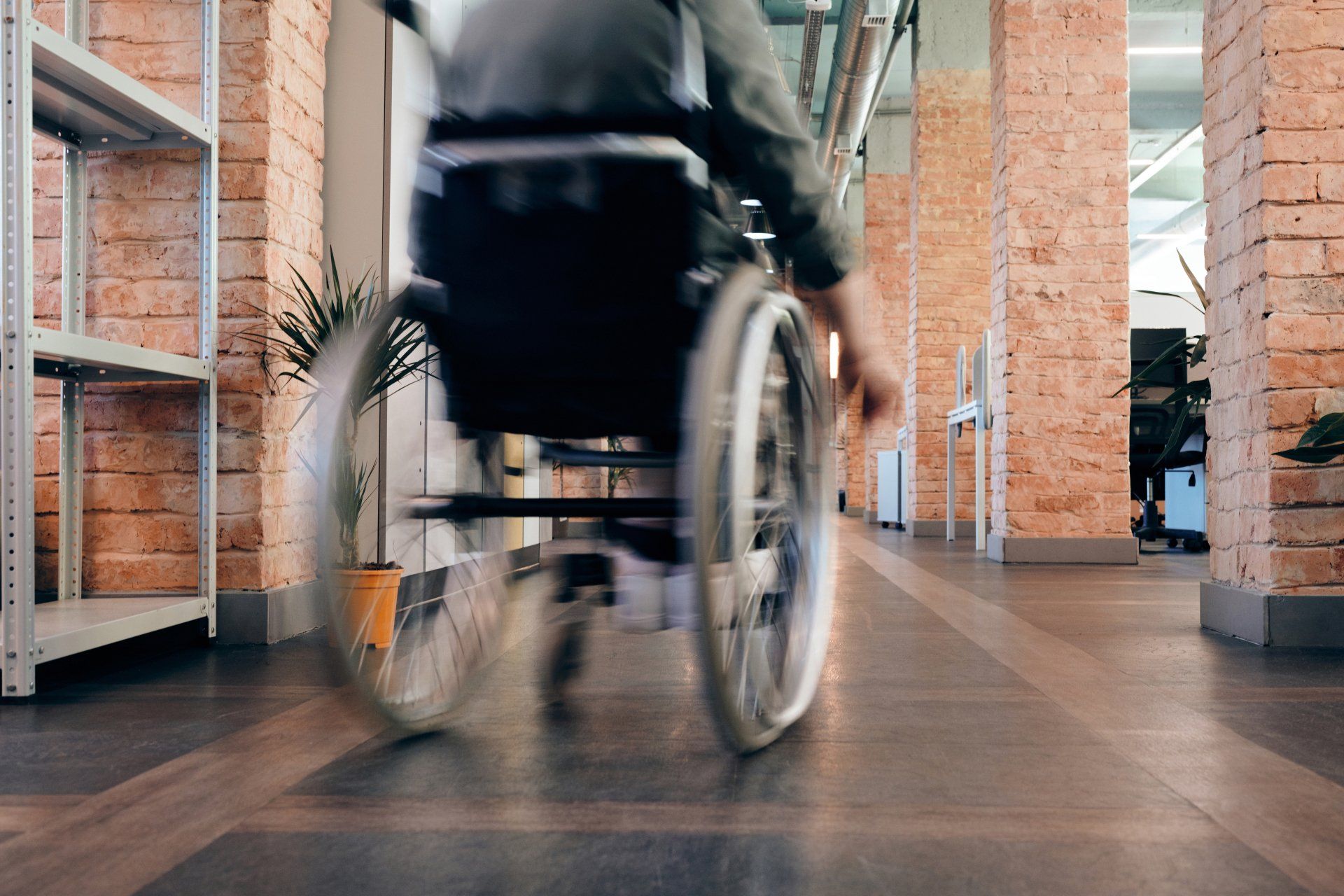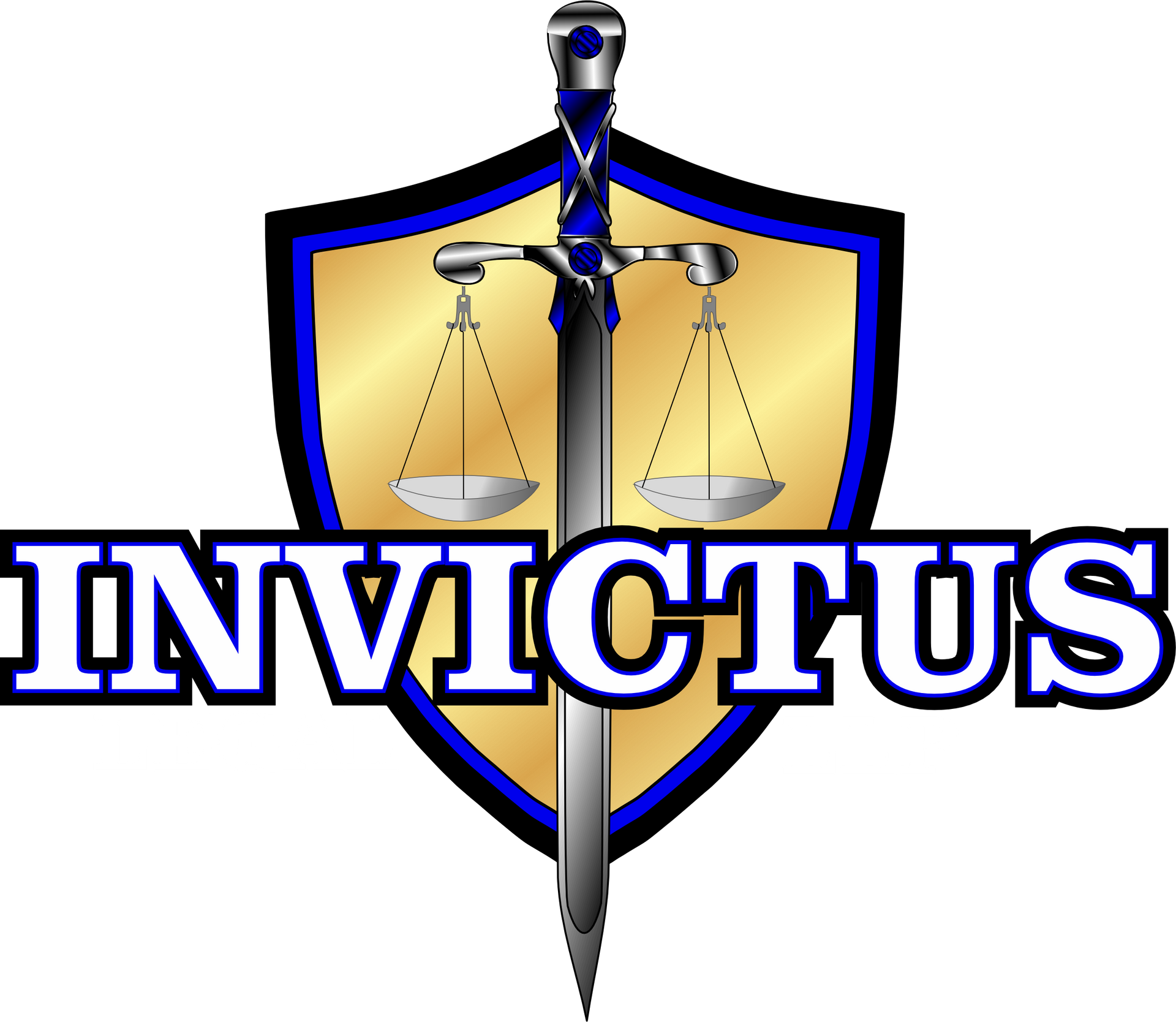Disability Tribunals

What is the Ontario Disability Support Program (ODSP)? ODSP is a program of the Ontario government that helps to financially support persons that, due to a disability, cannot work or earn enough to support themselves. It provides both a basic income as well as health benefits, such as drug coverage, dental and certain other benefits that cover the needs of people with disabilities. Many people with disabilities that are legitimate have difficulty getting this benefit. To get ODSP, you need to go to your local Ontario Works office, or in some cases, directly to ODSP, to be financially assessed. This means you need to find out first if you are “poor enough” to get ODSP benefits. This would include any earnings and assets of your spouse, if you have one, or any of your children (who live with you) if they are over eighteen years of age and not in school full-time. Some changes have recently been made to the program that allow more assets to be retained by the “benefit unit” (which is usually the total of people living in your household). There are also other exemptions, where even if the particular asset is worth more than what is allowed on ODSP, it won’t be counted as an asset when you go in to be assessed financially. These limits and exemptions are relatively complicated, so it is best to ask somebody with legal expertise in this area before you attend a financial assessment meeting. After your financial assessment meeting, you will be given a Disability Determination Package, which must be filled out by your doctor, psychologist, nurse practitioner, audiologist (for deafness) or occupational therapist (for various physical limitations). Most people go to their family doctor or a specialist who deals with their primary health concern. There is also a Self-Report section for you to fill out to add your perspective as to how your health and disability issues affect your life. I strongly suggest people attempt to fill this section out, but only after the medical provider completes their section. After this is done, you mail in your completed and signed Disability Determination Package to a department of government called the Disability Adjudication Unit (DAU). This department is headed in Toronto and staffed by people with health assessment knowledge. Many are OTs, nurses or other medical professionals. They review your application forms and decide if you meet the criteria of being a “person with a disability”. If you do meet these criteria, there is no need to contact us, as your local Ontario Works or ODSP office will contact you and start you on the program. You will be entitled to retroactive pay making up the difference between the monies you were receiving before your application and what you will be getting on ODSP. These monies go back to when your completed application was received by ODSP. For example, if your application was received on May 20, 2022, your retroactive pay will go back to June 1, 2021. What if I am turned down for ODSP Benefits? This happens quite frequently, even for people with serious or substantive disabilities. This is because all the staff at the DAU have available to them to make a decision is the medical submitted by your doctor. You would receive a letter explaining that your denial was because “you are not found to be a person with a disability”. This means you have up to thirty days to apply for what is called an “Internal Review”. This is also sent back to the DAU, which will pick another adjudicator who was not involved in the first decision to look at your application and then see if they support or overturn the original decision. The decision is overturned only a few times because, at this stage, there is usually not a lot more medical information to submit. After the Internal Review is completed, you will receive a letter with a decision. If you are still turned down, then you must appeal the decision to what is known as the Social Benefits Tribunal. The Social Benefits Tribunal is made up of people who are knowledgeable about the law regarding ODSP and disability issues, and are independent adjudicators. They do not work for or get paid by ODSP to work for SBT. If you appeal to this Board, you will get a hearing in about a year’s time, where you and preferably, a legal representative, can appear before it to argue why you should qualify for ODSP Benefits. The benefit of having a legal representative assist you at this stage is that they know about the time frames in which things need to be submitted, as well as what kinds of arguments to make that are more likely to get the Tribunal to decide in your favour. Many times, your legal representative will secure documents from your medical and health care providers, as well as provide a summary or further information about your disability (particularly if you have an unusual health condition). How can we help you with your ODSP Claim or Appeal? Invictus Legal LLP has a representative with more than twenty years arguing before these tribunals and has been largely successful in helping people obtain benefits. Give us a call today if you are appealing a decision by ODSP at (905) 688-5598. We also assist people who are already on ODSP fight other issues they might face over the course of time they are on ODSP, such as overpayments, arbitrary reductions, suspensions or cancellations of benefits, as well as numerous human rights related issues tied to ODSP rules and regulations. We have been involved at the legislative and political level as well in making changes for not only ODSP, but for the whole system as to how people with disabilities are treated by society.

What is Canada Pension Plan – Disability? If you have worked for some time, it is likely that you have contributed through your employer or at year end tax time to CPP. For most of us, this is supposed to help us with our retirement. However, CPP also offers a program for people who become “severely disabled” before they retire. This program is only for those who have contributed enough over the years (and there are specific rules for how these years are counted and how “drop out” periods are dealt with, such as years you might have spent at home raising children). The amount received is tied to how much has been paid into the program by the person making the application. To qualify, your mental or physical disability has to be “severe” and “prolonged”, which means it is more difficult to get accepted for CPP-D than it might be for some other benefits, such as ODSP. For CPP-D, you can receive full benefits, regardless of how much money you have or assets. However, your payments are limited by your contributions by law, and it does not include benefits, such as drug coverage, glasses and dental care. You can also live anywhere in Canada with CPP-D benefits (sometimes even other countries). However, “severe” means that your disability prevents you from regularly working in ANY remunerative employment, regardless of what type of job it might be. If you worked in a white collar job, and now with your disability you are only able to do a part-time light housekeeping job, you still won’t qualify. While your age, education, and certain other factors do count, they do not outweigh the medical evidence you have for your disability. “Prolongued” means that your disability is long continuing (likely permanent or long standing) or will likely result in your death (e.g. terminal cancer). How Do I Apply for CPP-D Benefits? You can call the Toll Free number on the Service Canada site or you can obtain an application from any Service Canada location. You must be able to verify your identity, etc. with certain documentary requirements. With your SIN number, Service Canada can track down your contributions to determine that you have paid enough into the system to be able to make a claim. Once that is determined, the CPP-D Application is divided into two parts: one for you to fill out, and the other for your doctor to fill out. With your application, you should attach as many medical records as you have that help point to the severity of your condition and your inability to work. You must also show how you have tried to continue to work or to find other work that is “lighter duty”. After your package is completed, send it to your nearest regional office (listed in the CPP-D package) and wait. What happens if I am turned down for CPP-D Benefits? Your first denial will come from Service Canada. You need to reply within a certain time frame by sending any new medical information and arguments as to why you should qualify by a certain date to their Reconsideration Unit. This is where another reviewer will take a look at your file and with new evidence, determine if they will uphold the original decision or change it. If you are denied CPP-D Benefits again, your appeal is to the Social Security Tribunal’s General Division. This is where you fill out a completely different form and start your appeal at the Tribunal level. Again, the Tribunal is an independent body that includes adjudicators that are not part of Service Canada that made the original decision, and these people are trained in the law that applies to CPP and other federal benefits. At this point, you should get legal representation as it can be tough to argue your own inability to work as this has to be shown objectively, and meet the definition in the law. There are different ways the Social Security Tribunal holds its hearings: videoconferencing, in-person or by telephone. Your best bet is to have an in-person hearing or one by videoconference, where the adjudicator holding the hearing and you can see and speak to one another in real time. This way, the adjudicator will be able to observe you, particularly if your disability affects your appearance, the way you walk or your need for assistive devices. Once this hearing is over, its decision will be mailed to you and your legal representative. If you are turned down again, your next option is the Social Security Tribunal Appeals Division, which is usually handled in writing and if they find in your favour, they may order a new hearing or just change the decision to deny you benefits. Hearings before the SST should be attended with a legal representative to improve your chances of getting accepted. Invictus Legal LLP has competent legal representation available for prospective appellants for CPP-D. We have been handling this for almost twenty years.

Rights Versus Privilege As a practitioner, I often attend overcrowded Provincial Offences Courts, where individuals are often charged with driving offences. If you can get past the line-ups to the front, you can often speak to Prosecutor to arrange a deal. At the same time, Justices of the Peace explode into a tirade about how driving a motor vehicle is a privilege and not a right. Reviewing the dockets these days is an amazing test of stoicism. Dockets show one person after the other charged with “driving while under suspension”, among other related charges. If you plead guilty to driving while under suspension, the Ministry of Transportation tacks on a further six months of suspension on your license. Defenses for this charge are limited, as this offence is considered a “strict liability” offence. That means in essence ‘you should known better’. In theory, all of this makes sense, but in reality this whole concept needs a rethink. Non Driving As A Disability I met dozens of individuals who have medical conditions that led to an administrative suspension of their licenses. If people think this only happens to older people, they are mistaken. Virtually all of those I worked with were under sixty five, one being a mere twenty-three years old. Once again, the Ministry enforces this idea about driving a vehicle being a “privilege”, they should understand what this means. Many of those seeking our representation for getting disability support are unable to drive. They have a better than average chance of qualifying for the Ontario Disability Support Program (ODSP) because of this. In many parts of Ontario, not being able to drive is a disability in itself. It can make you unemployable. Awhile back, one adjudicator looked me in the eye and asked me to convince her of this, citing “plenty of transit service” in the area. I readily produced a large package of advertisements copied from newspaper, Internet or other job posting sites, where literally every job demanded candidates have G license and access to a vehicle. I then ask where this appellant is going to work if they cannot get their driver’s license. If one thinks the state should not provide for these people, think again. Geography Versus Privilege In Niagara (and many other places), those “privileged” to drive are the only ones that can obtain the benefits arising from it, such as a job, a decent income and sense of belonging. Employers have said that drivers are more reliable, with of course no data to back it up. I am told that people with no license likely lost it through drunk driving or criminal activity. The truth is most license suspensions are not due to drunk driving, but for unpaid fines and medical reasons. Many of my clients were not aware they were suspended because they did not get the letter in the mail. In an average community, including Niagara Region, thirty percent of its residents over the age of sixteen do not drive. In larger communities like the Toronto area, this figure is much higher. Others do not drive because they cannot afford to do so. There are few jobs available to those that cannot or do not drive. Many candidates are screened out as a certain kind of “riff raff’, a long held belief about workers that do not drive. However, these are discriminatory requirements in place with almost every job, not just jobs where there is a bone fide reason to require a license. As a result, the majority of people with disabilities, students, older persons and low income persons are trapped into this legislated cycle of poverty, perpetuated by this accepted prejudice and legalized discrimination. Marginalized in Their Communities It is not just employment where non-drivers are discriminated against, but many are also left out of their communities. In order for a driver to remove their lens of “privilege”, they should leave their car at home for more than a month. While doing so, they should try to carry on their lives without driving. Day to day tasks can suddenly become daunting. The idea of transporting children to school, dropping them off at daycare (which may or may not be close by or at a bus stop), going to work and doing one’s job becomes a struggle. After work, reversing the route and picking up a few groceries for the evening’s meal becomes unthinkable without a vehicle. First, it is not likely that you will get home a reasonable hour, but you will likely be worn out as well. Such workers cannot even dream about going out again to take in a movie or work out at the gym or YMCA. Repeating this Kafkaesque routine everyday soon gets old, whereby one no longer wants to do as much. Imagine If … As a non driver, trying to do a grocery run on your way home is out of the question. You do not have the time, bus fare or flexibility in doing so. You will find you have to take up one of your precious weekend days to do this. For those without a vehicle, grocery shopping is a bigger chore than it is for those that drive. You can only go to the grocery store every week or two. Shopping at multiple locations is tricky, particularly without a trunk to store your earlier purchases in. Tough luck if there’s a special in the meat department at one store and a special on produce in the other. You can’t go to both. Drivers simply put the groceries from the first store in their trunk, then go on to the next one and be home in an hour or two. Research has shown that non-drivers end up spending more money on the same products that drivers do, simply because of this limitation. Once you finish the groceries, you need to get them home. You only have two hands, so taking them on a bus might be impractical, especially if you live a long way from the grocery store. Many phone a cab. Cab companies, while charging an arm and a leg for their service, are not always reliable transportation. People who work shifts, take groceries home, or need transport for medical reasons, often find themselves waiting for quite some time for a cab. CT Scans, dialysis and other non-emergency medical trips are required on a 24-hour basis. It is not unheard of for people to wait at a hospital, a grocery store or elsewhere for two or more hours in some communities to get a ride home. But It Costs So Much to Drive! I often hear drivers complain about the cost of gas, insurance, maintenance and parking for their cars. However, it is more likely than not that they have secure, better paying employment that pays them enough to cover expenses. It is difficult for non-drivers to have empathy for drivers over expenses. It costs more on a per kilometer basis for cabs, private drivers, Uber and other private methods of transport. Public transport is sometimes available, but you are trading large amounts of time for the supposed savings. For these reasons, non drivers go to far fewer places than drivers do. In effect, our government, likely through the heavy influence of the auto industry, driving has become a necessity. This is not just for getting around, but for maintaining one’s dignity and belonging to one’s own community. It is difficult to develop an attachment to one’s community if they cannot get around in it. Most “free” community events are held on statutory holidays, where the transit service is limited or non existent. Non drivers don’t have the same ability to access the ‘informal markets’ that drivers do: garage sales, Kijiji or a swap service. Many consider if they are giving an item away for free, the person wanting it should pick it up. Paying for a delivery service can be prohibitive. The community does not accommodate non drivers because they don’t have to. Non-drivers are a low hanging fruit that can easily be swept away with ignorance and disregard. However, it is more difficult for us to consider the very interests that want to force everybody to buy a car, despite thirty percent of the population not driving and eleven percent in zero car households. I have encountered many members of that eleven percent. Very few are gainfully employed and if so, they are substantially under employed. If they are young enough, they make plans to leave the region to go elsewhere, because they see others older than themselves stuck in their communities. Privilege Versus Equity If the Ministry of Transportation wants to maintain its right to decide who can and cannot drive, there needs to be meaningful, effective and reliable alternatives to those that cannot or do not drive. Everybody may not have the “right” to drive, but all should have a right to travel and get around their communities in a reasonable period of time. Employers should not be allowed to require candidates for employment to own a vehicle and drive. An exception would only be if the employer were seeking courier, cab drivers or the like. Employers that find it easy to overlook those that don’t drive should find a way to ensure everybody otherwise qualified for the jobs could work there. It should cost employers to deny access to jobs in this way. If they complain about it being ‘inconvenient’ to have their employee not able to hop in their cars and go wherever, they should pay for this. In other words, they should make it work. Put the onus on the company to ensure all of its staff can do the essential duties of the job. Municipalities should also enforce the human rights code and AODA if cab and private transportation companies want to keep their own licenses. Graduated Driving As A Barrier For some who have been non-drivers for a long while, the graduated system in place makes it difficult particularly for older learners. Younger people who still have access to their parents or older siblings have somebody that could accompany them for practice sessions for the G2 road test. Older people, particularly those that live alone, have less access to somebody like this. Exceptions should be made for those that have driven before or who are older than thirty. If the powers that be think that upgrading RELIABLE alternative transportation for communities costs too much, they need to re-think their policies. Costs are currently downloaded on those who are left behind, those determined by the Ministry not to drive, or those that choose not to drive. It costs money not to work, just as it costs a community to have too many people that cannot access jobs. Technology Versus Marginalization The issue about having or not having a driver’s licence may soon become moot. Over the past few years, successful test models of self-driving vehicles have been entering the community. Like Uber, Airbnb and Amazon Prime, this technology will disrupt our community’s current prejudices and way of life. Many people whose livelihood depends on being behind the wheel will soon find themselves marginalized. Those who weren’t able to drive will gain access to their communities. Topics of discussion will become more nuanced and varied, as opposed to the usual complaints about the price of gas, the latest head on vehicle crash or the latest model Ford is putting out. There will be no more communities where two-thirds of the businesses within either make cars, fix cars, paint cars, sell cars, lease cars or use cars to drive people or things around. We will all be forced to pursue other interests. Even some members of my profession that focus on Highway Traffic offences will have to re-think their vision of legal advocacy.

What Are Statutory Accident Benefits? Statutory Accident Benefits (or SABS) provides “no fault” insurance coverage to accident victims after a motor vehicle accident. You do not have to be a driver of a motor vehicle to receive it. You can also be a passenger, a pedestrian or using public transit at the time. The benefits are set out to pay for medical, financial and certain other costs related to your injuries. SABS is part of a mixed no fault/tort liability system, whereby SABS is the ‘no fault’ benefit. For those more seriously injured, there is the tort system. Under tort, an accident victim sues the other driver to augment SABS and to receive other “damages” in tort. In order to sue, you must meet what the courts call “threshold”, which is beyond the discussion here. SABS benefits are paid for through your automobile insurance policy. If you do not drive or carry a policy of your own, you must use your spouse’s policy or the policy of the driver of the vehicle you were in. If you were a pedestrian and have no collateral coverage, the driver of the vehicle that hit you is the policy you claim against. If the ‘other driver’ is not insured, you must claim through the Motor Vehicle Accident Claims Fund. Who Gets Statutory Accident Benefits? Anybody who was involved in a motor vehicle collision can submit an OCF-3 (disability certificate) signed by a medical practitioner to make a claim. If somebody died, there is a death benefit available to the person’s direct dependents. To claim these benefits, one must contact their own insurance company (or as above stated, the insurance policy nearest you) to request an Accident Benefits Package within thirty (30) days of the accident. Often, you will meet with a representative appointed by the insurance company shortly after you make your claim. They will take what is called a Statutory Declaration. You may wish to consult legal advice before making this statement. This is a full statement as to what happened, how the accident affected you, what losses you suffered, any witnesses and ongoing medical needs. The claimant then needs to make an election. The election is more complicated since September 2010, where prior to one had the choice of electing to claim benefits as an Earner, a Non-Earner or a Caregiver. After September 2010, the designation was Earner and Non-Earner. If you are the insured person and you and you paid a special premium on your policy known as ‘optimal coverage’, you have greater entitlements. If you do not hold a policy of insurance and are a victim, you only get basic coverage. What is Basic Coverage? Advocates criticize the new SABS policy because it delivers fewer benefits and they are much harder to get. After a claim is made, if it is not obvious to the insurance company that you are more seriously injured, you will be placed in the Mild Injury Guideline (MIG). This category limits your claim to $3,500 in medical/rehabilitation benefits. At the time this was put into place, those diagnosed with a whiplash II (or WAD II category) or less were placed in this category. This is based on faulty assumptions that people in the MIG require less time to completely recover. However, if you have prior medical conditions that can impact on your recovery time, you can provide this information and get removed from the MIG. This also applies if you can prove there are psychological damages. Moreover, those that do manage to leave the MIG are only entitled to a combined total of med/rehab benefits and attendant care up to a limit of $65,000. Prior to 2010, these limits were $100,000 and $35,000 respectively. Housekeeping and Home Maintenance Benefits and Caregiver coverage have been slashed. They are only available to persons who are considered “catastrophic” or who purchased ‘optimal coverage’. What is Income Replacement Benefits? If you lost earnings due to your accident, there is a one week “deductible” or waiting period. If you lost more than a week’s earnings, you need to provide pay stubs, tax returns, among other documentation. You also need to submit an Employer’s Statement if you are employed. Basic coverage is 85% of up to $400 per week in coverage. If you purchased ‘optimal coverage’, this can extend to up to $1,000 per week. These benefits continue for up to 104 weeks, after which you must meet a stricter test of your inability to work. If you were not working at the time of the accident, Non-Earner Benefits are available if you are unable to carry out your ‘normal activities’. This is defined as what you were able to do before the accident, when compared to after. These Benefits are harder to get these days than they have been prior to 2010, but there is a shorter wait period. How Does Your Insurance Company Test Your Eligibility for Benefits? Upon making an election, you may start to receive benefits right away. For medical/rehab benefits, you need to meet with a treatment provider and have them complete a “treatment plan” (OCF-18). However, sooner more often than later, your insurer will send you for what is called an Insurer’s Medical Examination. This is covered by the insurance company. Your costs may be covered in some cases. You are required to attend these examinations, or you can be cut off your insurance claim for non-compliance. You will be sent to a medical examiner who has not treated you in the past who will evaluate you for your claim. A report is then sent to your insurer and your insurance company then sends you a decision as to whether to continue to cover your benefit or to deny it. In some cases, you may wish to request an IME to take you out of the MIG. The cost of this is included in your $3,500, so be careful if you wish to do this. You may also supplement this application with documentation from your own treating physicians. What Happens if the Insurance Company Denies Benefits or Cuts Me Off? If you are cut off of your medical/rehab benefits, income replacement benefits or any other benefit, you have the right to challenge the insurance company’s decision. This is brought through a tribunal called the License Appeals Tribunal (or the LAT). Prior to the recent changes, the Financial Services Commission of Ontario (or FSCO) handled these disputes. FSCO still handles claims brought the Motor Vehicle Accident Claims Fund. The LAT has its own rules of procedure for dealing with disputes for those disputing denials from insurance companies. The section of the LAT that deals with these claims is called the Automobile Accident Benefits Service (AABS). If you plan on filing an appeal, it is best that you ensure that you made sufficient claims and/or treatment requests and have undergone treatment. The date of submission of your denied treatment plan must not be more than ten days of the insurance company’s denial. In order to be eligible to file an appeal, you must show a treatment plan (OCF-18) was submitted and then denied by the insurance company. Other costs, such as Housekeeping and Home Maintenance and Caregiver Benefits must be shown be incurred, meaning you paid for them or somebody has taken the economic hit to care for your children. It is also best if you have your own treatment providers back your claims and put these opinions in writing. The appeals process for insurance disputes of this kind can be complicated, so it is best to seek competent legal advice from a lawyer or paralegal before proceeding. Invictus Legal LLP has somebody that can advise in these areas .

